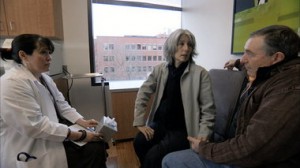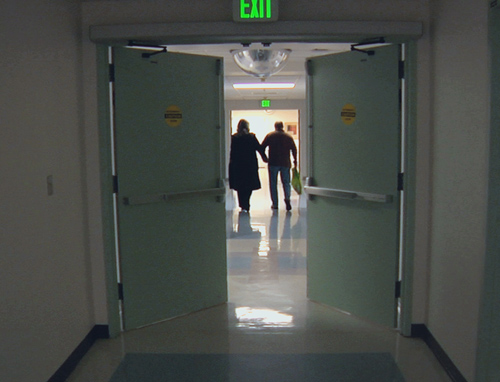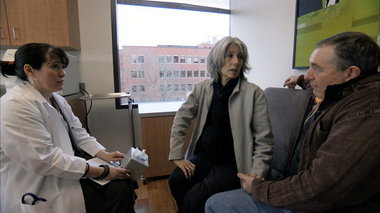 How To Die in Oregon is an alarmingly personal documentary examining the ethics and politics of killing oneself through what some call “physician-assisted suicide” – in Oregon it is called Death with Dignity Law. The film opens with home video of an elderly man having a “death party” – he has made the decision to kill himself with the assistance of his case worker from Compassion and Choice. Under the law a doctor can prescribe a deadly dose of Seconal, which the patient must administer themselves. Prior to his dose, the man’s last words thank the “wisdom of the votes of Oregon.”
How To Die in Oregon is an alarmingly personal documentary examining the ethics and politics of killing oneself through what some call “physician-assisted suicide” – in Oregon it is called Death with Dignity Law. The film opens with home video of an elderly man having a “death party” – he has made the decision to kill himself with the assistance of his case worker from Compassion and Choice. Under the law a doctor can prescribe a deadly dose of Seconal, which the patient must administer themselves. Prior to his dose, the man’s last words thank the “wisdom of the votes of Oregon.”
Like the decision to end one’s life, the film is intensely personal – but also political. Neighboring Washington state passes a similar law, pushed forward by a women whose husband’s brain tumor caused him so much pain he virtually aged over night. Filmmaker Peter Richardson maintains an interesting balance, although the bend is clearly towards those that are suffering, and in that respect he has made an advocacy film. He also allows the other side to speak. Shockingly, adding fire to the “Obama Care – Death Panels” debate, we meet a man dying of cancer, whose treatments won’t be covered under Oregon’s Public Health Care plan. He is told to explore end of life care, which may include the use of the Death with Dignity Act.

Others are too terminally ill to administer the doses to themselves. The difference between what Jack Kevorkian famously did and the Death with Dignity law is that doctors are only prescribing, not administering the dosage. Much screen time is given to a woman, Codi Curtis, who is dying of cancer and retaining fluid which she describes as adding the weight of a late trimester pregnancy. Her decision is to take her own life prior to the worst of the pain. Codi does have good days and bad days, and a new treatment assists her, until she gets to the point where they’ve done all they can for her.
How To Die in Oregon is a intimate and compassionate look at a decision that is as personal as the abortion issue. As long as the patients within a sound mind can make the decision to stop the pain, it is a personal decision, more so than a political one. The politics of the slippery slope is something that is worth exploring, but nearly impossible to do without advocating for a certain view.


